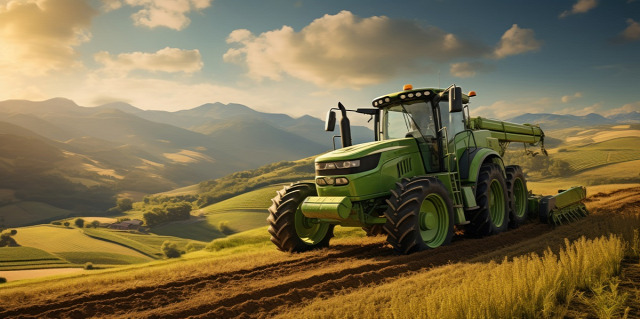
In the modern era of agriculture, where technology plays a pivotal role in enhancing productivity and efficiency, the ISOBUS (ISO 11783) standard has emerged as a game-changer. The ISOBUS Component Market is experiencing rapid growth as farmers and equipment manufacturers recognize the benefits of this standardized communication protocol.
Significance of ISOBUS in Agricultural Machinery
ISOBUS, short for ISO (International Organization for Standardization) Bus, is an international standard that defines a communication protocol for the control and monitoring of agricultural machinery and implements. It enables interoperability between different brands and types of equipment, allowing farmers to connect and control multiple implements using a single terminal or display. ISOBUS facilitates data exchange, control functions, and diagnostics, streamlining operations and enhancing efficiency on the farm.
According to BIS Research, In 2022, the Global ISOBUS Component Market reached a valuation of $714.3 million. Over the forecast period 2023-2028, the market is projected to exhibit a CAGR of 10.49%, ultimately reaching a value of $1.28 billion by 2028.
Key Components in the ISOBUS Component Industry
ISOBUS Displays: ISOBUS displays serve as the interface between the operator and the machinery. These user-friendly displays provide farmers with real-time information, including machine settings, diagnostics, and field data.
Task Controllers: Task controllers are essential components in the ISOBUS ecosystem. They receive commands from the display and transmit them to the implements, ensuring accurate and synchronized operations.
Universal Terminal (UT): The Universal Terminal acts as a bridge between the tractor and implement, facilitating communication and data exchange. It enables the seamless integration of ISOBUS-compatible implements into the tractor's electronic system.
Electronic Control Units (ECUs): Electronic Control Units are responsible for managing specific functions within agricultural machinery. They receive commands from the task controller and control various aspects such as hydraulics, seed meters, sprayer valves, and implement functions.
Section Control Modules (SCMs): The ISOBUS Component Sector also includes Section Control Modules (SCMs) such as sensors, cameras, and GPS receivers, which enhance the functionality and capabilities of the agricultural machinery.
Access More: Get Detailed FREE Insights on ISOBUS Component Market Research Report by BIS Research.
ISOBUS Component Market Outlook
The growing use of precision agriculture techniques, technological developments in agricultural equipment, and the requirement for smooth connectivity and interoperability on farms are all contributing to the robust expansion of the ISOBUS Component Industry. In order to meet the changing needs of contemporary farmers, manufacturers are devoting resources to research and development in an effort to broaden the range of ISOBUS products they offer, optimize interoperability, and optimize user experience.
Future Prospects and Benefits
In the upcoming years, the market for ISOBUS components is expected to increase significantly. The following are some advantages that using ISOBUS technology offers to both farmers and equipment manufacturers:
- Enhanced Productivity: By encouraging interoperability, farmers can use multiple implements with a single terminal, cutting down on complexity and maximizing productivity. Workflows are streamlined, downtime is reduced, and overall productivity is increased.
- Cost Savings: Farmers can save money by using ISOBUS instead of buying separate displays for various implements. Standardized protocols also make integration easier, which lowers installation and maintenance expenses.
- Enhanced Flexibility: With ISOBUS, third-party implements may be seamlessly integrated into fleets of existing gear, giving farmers more options and adaptability to changing operating requirements.
- Data Management: By facilitating data sharing between farm management systems and machines, ISOBUS enables farmers to gather, examine, and use important data for documentation, optimization, and decision-making.
Conclusion
The agricultural machinery industry is undergoing a transformation thanks to the ISOBUS Component Industry, which is standardizing communication protocols. Farmers may improve operating efficiency, take advantage of advanced features, and integrate several implements effortlessly with the help of ISOBUS-compatible displays, task controllers, universal terminals, and electronic control units. The farming industry's adoption of ISOBUS technology is expected to result in increased production, better compatibility, and sustainable farming methods in the future.

